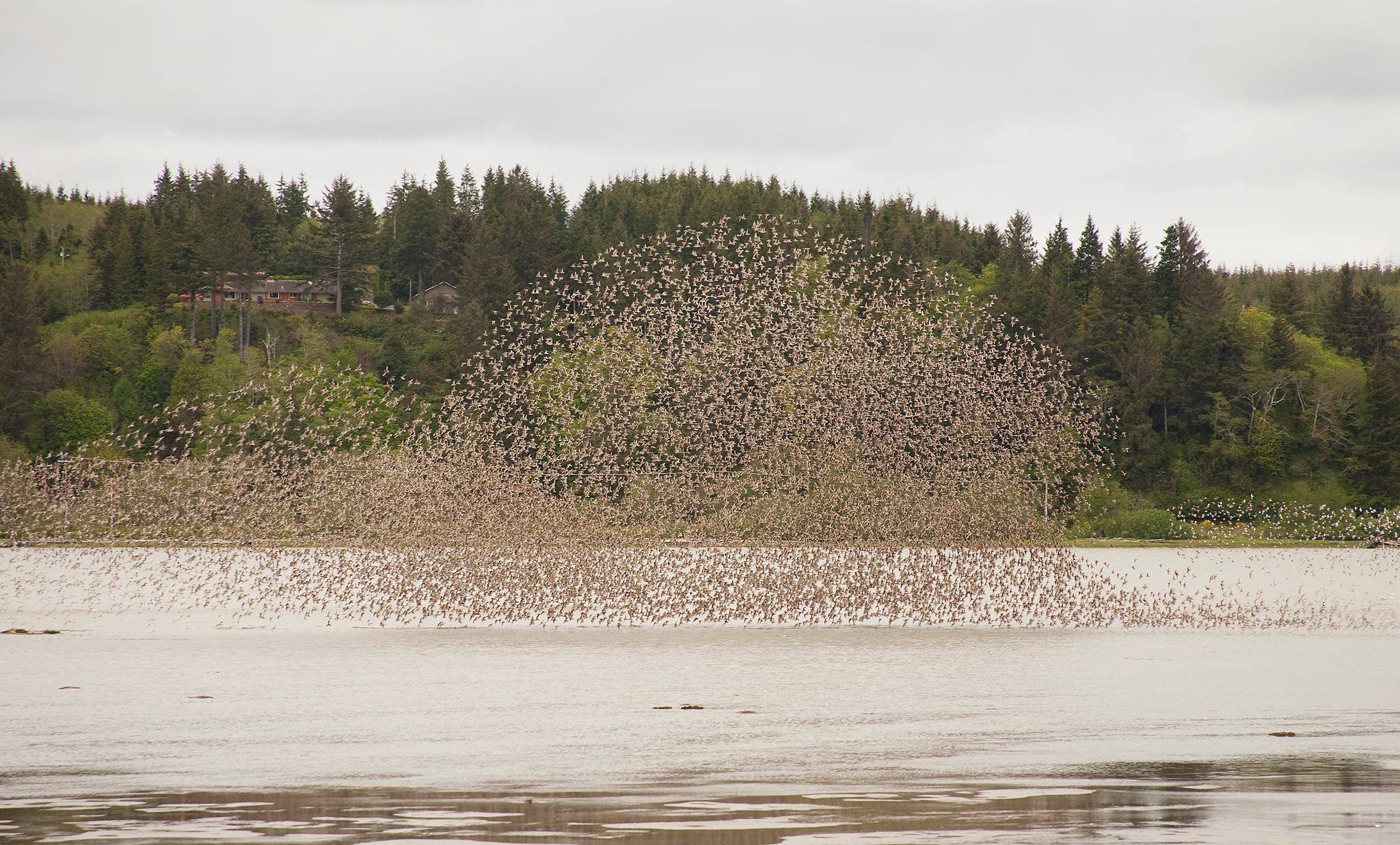The Grays Harbor Shorebird and Nature Festival will begin later this month in a much different format for the humans, pretty much the same for the shorebirds. The pandemic closed down the annual event last April, in large part because it focused groups of people in smaller spaces. Organizers knew they couldn’t do much to change the schedule for thousands of shorebirds who flock to our coast for their annual journey, so instead they sought the help of another local business to take their event online for virtual tours and information to get people outdoors and safely distanced to enjoy the event once again.
Glynnis Nakai, Project Leader at the Nisqually National Wildlife Refuge Center, said usually the event would be centered around the Hoquiam High School, the track, and even Bowerman airfield in Hoquiam, with informational kiosks and live bird displays. She said, “this year, since we couldn’t do it in person, we wanted to really highlight the areas in the community’s backyard. And so there are different locations in Ocean Shores, Westport, Grayland, and Tokeland. Those sites were selected because there’s some really good viewing opportunities.” Nakai added that some of the locations are where they would offer guided field trips by bus from the event.
Now, bird watchers and shorebird festival enthusiasts alike are encouraged to visit multiple locations along the coast at their leisure and remain responsibly distanced from groups outside of their own household. Nakai says the best time to visit if you are a bird is when the water has receded and the muddy tide land is exposed, the best time for humans wanting to see the birds is about 2 hours before and after high tide, when that water is pushing them closer to the trail and viewing opportunities. She explains, “As the tide is coming in, shorebirds don’t have real long legs and they just like the mud flats, it’s going to push the birds closer to the edge of the marsh and closer to the Sandpiper trail. Then they will rest on the logs until that water recedes. And as soon as that water recedes, they’re back out onto the tidal flats foraging.”
The sandpiper, and other shorebirds, forage by walking slowly through mudflats and pecking or probing to obtain tiny invertebrate prey. This is also where one can see murmurations of shorebirds, which is a shape-shifting cloud of the birds flying in tight formation to appear larger than the birds of prey who may be hunting them.
“With the pandemic, they had to be a little more creative on how they approached the whole thing,” says Rick Moyer, owner of Moyer Multi Media LLC, who was contracted to help the event take flight online. Although officially this year’s event is from April 24-30, the online experience has been underway through social media posts and events for almost a month now through his company.
“We’re doing a big video for the festival that will talk about the migration and the different birds you can see, why they do some of the things they do, and some of the things to look for when you go out for a self-guided tour.” He has posted video interviews and informational shorts with educators like Davey Clark, local birdwatchers and enthusiasts, and a stuffed animal shorebird named Sandy Piper.
Moyer said it’s been a learning experience for him, too. “When you see the cool patterns that the birds all fly synchronous, and like they are white, and then they turn brown, I did not know this; they don’t do that just for fun.” Describing murmurations, Moyer went on to say “what they’re doing is if you look about 25 feet above that, that cloud of birds, you’ll see a hawk, and the hawk is trying to get dinner.”
The U.S. Fish & Wildlife Service reports that most of the world’s population of Western Sandpipers move through the Grays Harbor estuary, some spending two to five days in late April. In season, the Grays Harbor estuary is one of four major staging areas for shorebirds in North America and one of the largest concentrations of shorebirds on the west coast, south of Alaska. From late April through early May, hundreds of thousands of shorebirds flock to the muddy tide flats to feed and rest before their non-stop flight to northern breeding grounds. Arctic-bound shorebirds, coming from as far south as Argentina, travel over 15,000 miles round trip. Birds of prey are also very aware of the increased food supply, and you might just see some larger birds out there during the event.
The Grays Harbor National Wildlife Refuge remains open with access to the Sandpiper Trail. Please take precautions when outdoors and follow social distancing recommendations.



